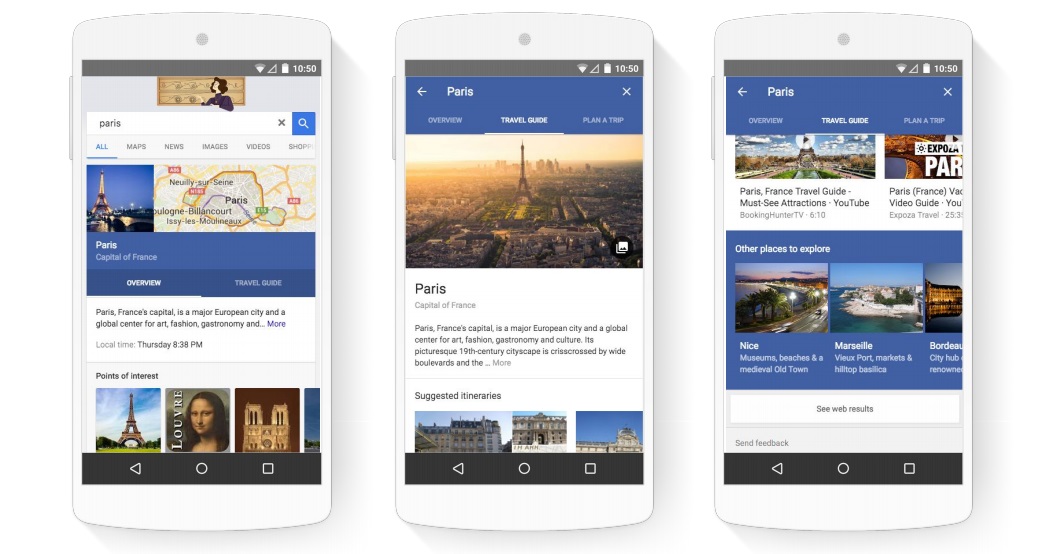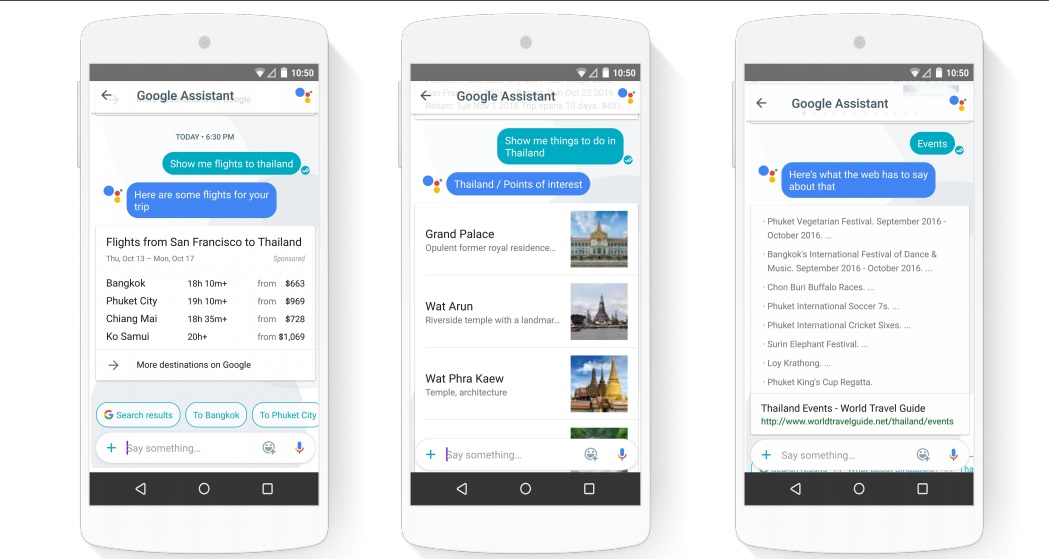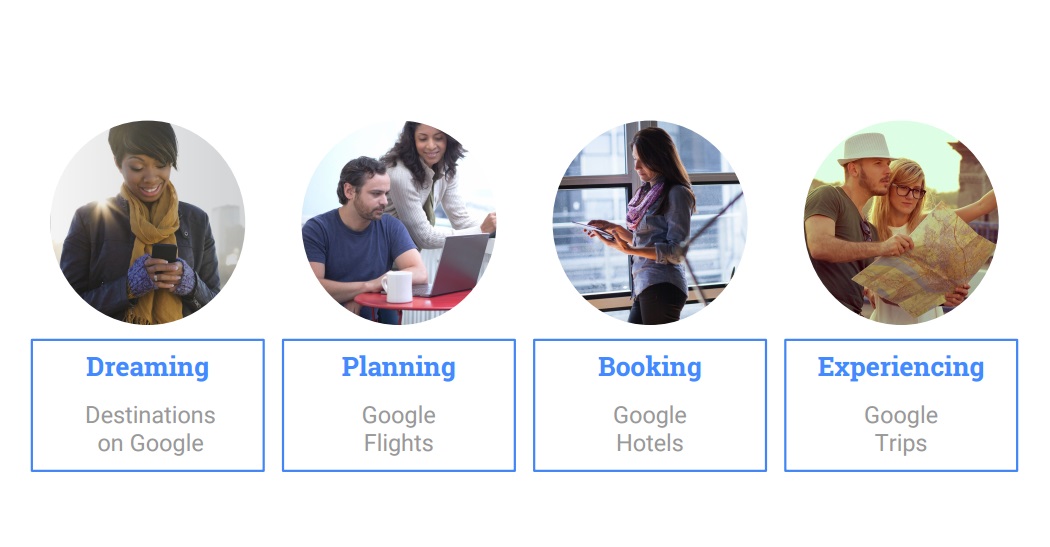Planning a holiday is not the easiest thing to do; especially since many now use smartphones as a primary device. Google, as is always the case, has finally completed its suite of travel planning tools. The quartet of Google Destinations, Flights, Hotels, and now Google Trips was technically finished last month; but has only now been localised for Malaysians.
Google’s travel tools are spread across its search engine; with the Google Trips app being the odd one out. Destinations, Flights, and Hotels are all integrated with the search function, and appear when a user conducts a search for related activities.

Destinations provides information about potential locations and activities for holidays; while Flights and Hotels contains tools to help book transportation and lodging. Google Flights also recently picked up the ability to track the price of certain flights; alerting the user if there is a promotional deal or if the cost drops for whatever reason.
According to Google’s Director of Product Management Eric Zimmerman, these three apps also share the same design language to reduce the amount of data entry required to use them. The most common tools and searches are laid out using large buttons and drop down menus; largely to cater to the increasingly mobile crowd. Essentially, it is designed knowing that typing on a smartphone is uncomfortable and people want to be able to tap their way to relevant information.

The new Google Trips also builds on this design language. Designed as an offline travel assistant, Trips downloads and stores information about a particular trip to make it easy to find. Users will be able to add trips to the app and it will automatically pull information from Google’s other services to fill in the blanks. This includes travel information, Destinations, maps, and hotel (including AirBNB) booking information.
The app also allows users to plan their itineraries based on their own interests or particular locations. Trips will take the information and then figure out how to get to each place, along with any interesting stops along the route. Clueless travellers will also be provided with information about local customs and etiquette on things like tipping and public transportation.

One small thing is that the information for each trip is a self contained package. This is similar to Google’s offline maps function, and represents quite a chunk of storage. Zimmerman was unable to provide an average download size, but it appears to at least be larger than 150MB. While this doesn’t sound like a lot, it could turn out to be problematic for people who keep adding new trips without deleting old content.
Google Trips isn’t quite finished yet, and it sounds like Google is still working on adding features in the future. If anything, it cannot share trip information with others yet; limiting its use as a guide for groups travelling together.
Google Trips is now available on Android and iOS. The initial download is still rather small, but the size of trip packages makes this deceptive and potential users should be watching their storage carefully.
Follow us on Instagram, Facebook, Twitter or Telegram for more updates and breaking news.


